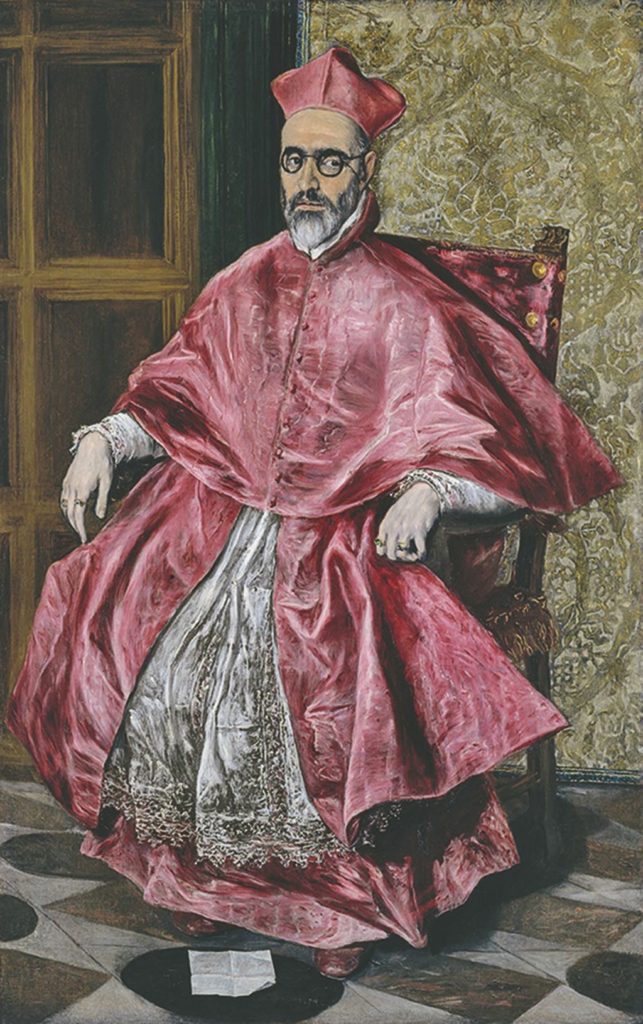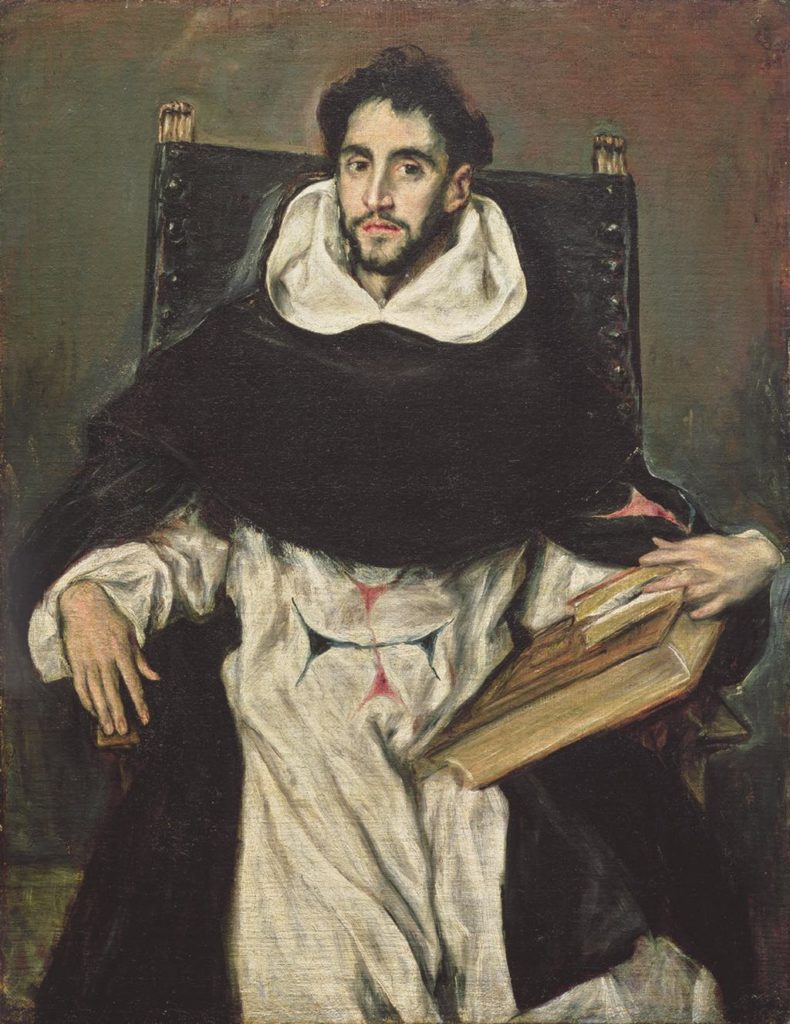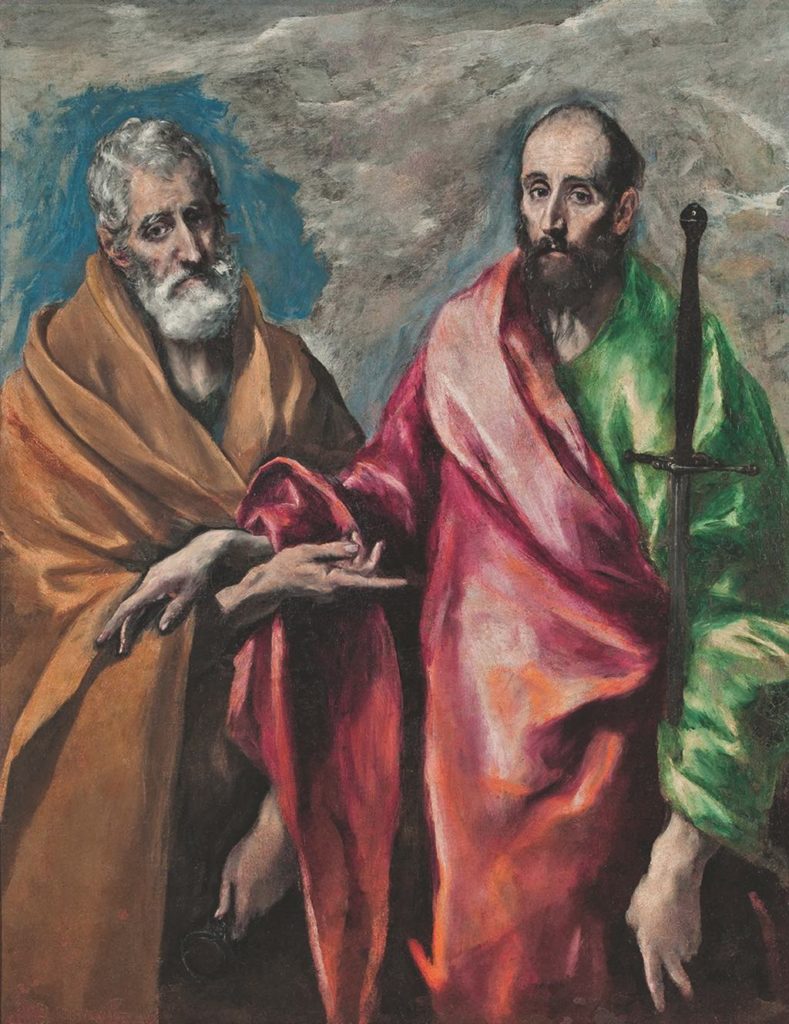
The first time I saw an exhibition of El Greco’s paintings, I thought they were profoundly weird and incomprehensible, but over time I have grown to love them and seek them out in the museums I visit. Now we can enjoy some 75 works by him right here in Paris at the Grand Palais through February 10, 2020, in the exhibition “Greco.”
How did this Greek artist, born Doménikos Theotokópoulos in Crete (at the time a Venetian possession) in 1541 but later a resident of Venice, Rome and Toledo, come to create such unusual works? I wasn’t really enlightened on this question by the exhibition, which seemed short on analysis, but I did have the pleasure of seeing many masterpieces, as well as some of his early works.
I have always wondered where El Greco’s unusual pastel colors came from. According to the curators, in this, he was influenced by one of his idols, Titian, and the other Venetian artists of his time, but those odd, shimmering greens and pinks and yellows seem to be unique to El Greco.
Although he learned much by observing the work of his models Titian and Michelangelo during his years in Venice and then Rome, Greco did not imitate them but developed his own distinctive style and even dared to criticize Michelangelo, much to the displeasure of the Romans.
The show starts with two badly damaged early paintings on wood, which attest to his training as an icon painter in the Byzantine style. One, “Saint Luke Painting the Virgin” (1560-66) could be said to show his reverence for his own profession, with the figure of the patron saint of artists looming in the foreground as he paints his much smaller holy subjects. Or perhaps this was an example of the arrogance the artist was often accused of.
Seeking better opportunities than he was able to find in Venice and Rome, El Greco moved on to Spain sometime around 1577. After a failed attempt at realizing his life’s dream of becoming a court painter – King Philip II was not pleased with the two paintings he had commissioned from the artist – this haute-Mannerist painter, whose strange, expressionistic works and stretched and twisted figures were not to everyone’s liking, settled in Toledo, where he seems to have lived a productive, prosperous life until he died in 1614.
The exhibition at the Grand Palais offers a star-studded parade of his paintings, with some filler. Take the time to linger over an amazing, detail-packed small triptych on wood, the “Modena Triptych” (1567-69), painted on both sides, then watch as after a time he leaves behind the small wood panels he learned to use as an icon painter and his paintings grow in size, power, luminosity and grandeur.

One of the many masterpieces is the famed portrait of Cardinal Niño de Guevara (c. 1600) in his startling pink robes (one proof among many that the artist was no slouch at painting sumptuous fabrics) and little round glasses. This work inspired both Diego Velázquez and Francis Bacon.

In contrast is the almost colorless (except for the red-and-blue cross on his vestments) “Portrait of Brother Hortensio Félix Paravicino” (c. 1609), with his lively glance, a good example of El Greco’s talent as a portrait painter.

Amid a gallery of saints, we find a double portrait of Saint Peter and Saint Paul (1590-1600) dressed in brilliantly colored robes. The entwined hands of the apostles may represent an argument between the two about whether non-Jewish Christians should abide by the laws of Moses, with Peter pointing to Paul to symbolize his acquiescence to the other’s viewpoint.
The exhibition ends with a bang with “Vision of Saint John” (c. 1610-14; pictured at the top of this page), in which the saint throws up his arms in ecstasy as naked souls reach for the robes of salvation. This painting is supposed to have influenced Picasso’s “Les Demoiselles d’Avignon,” but take a look at the figure on the far right of his “Guernica,” which seems directly inspired by Saint John’s pose.
El Greco’s paintings are seen by the curators and others as a harbinger of modern painting, but that seems to be an honor given to far too many artists. In fact, he couldn’t have been more modern in his own time in his insistence on going his own way and expressing himself as he wished. Don’t miss this exhibition.
Favorite